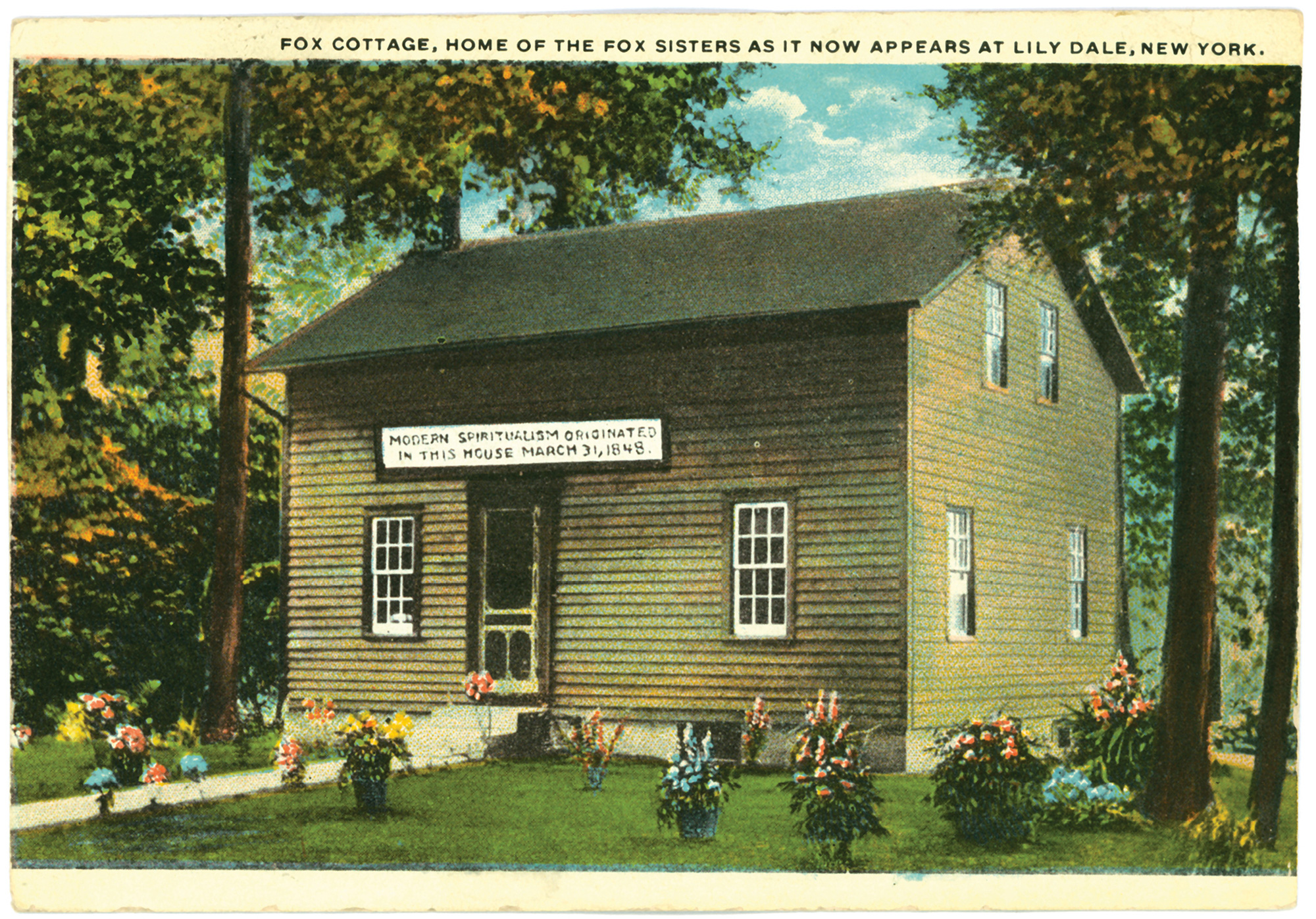The Town Where the Dead Live
Lily Dale and the rise and fall of Spiritualism
Christopher Turner

In 1848, in Hydesville, New York, twelve-year-old Kate Fox and her fifteen-year-old sister Margaret discovered that spirits could communicate with them through table rapping. Telegraphy had just been invented, and it was as if the dead were making use of a kind of Morse code. After public displays of their mediumship, the Fox sisters became a national sensation, inspiring the belief that it was now possible to talk with the dead. Two decades later, adherents of the new religion that grew up around them founded the town of Lily Dale, sixty miles south of Buffalo in an area of upstate New York that came to be called the “burned-over district” because of the waves of religious revival—Mormonism, Adventism, Spiritualism—that flourished there.
There were, it is estimated, eleven million Spiritualists in America at the end of the nineteenth century. In its heyday, Lily Dale, on the shores of Lake Cassadaga, had a Ferris wheel, a bowling alley, a ballroom, and was known, because it was one of the first towns in the area to get electricity, as the City of Light. It was a magnet for suffragettes, peace campaigners, abolitionists, and members of other progressive political causes; it even had its own liberal newspaper, The Sunflower. Famous visitors included Arthur Conan Doyle, Mae West, Harry Houdini, and Franklin Roosevelt. In 1916, the Foxes’ haunted house, where the spirit world first manifested, was moved to the town, making it the official capital of the faith (it burned down in 1955).
In 1888, Margaret Fox wrote a signed confession, published in the New York World: “That I have been chiefly instrumental in perpetrating the fraud of Spiritualism upon a too-confiding public, most of you doubtless know. The greatest sorrow in my life has been that this is true, and though it has come late in my day, I am now prepared to tell the truth, the whole truth, and nothing but the truth, so help me God!” She admitted that the spirit rapping was actually created by the clicking of knee and toe joints. “My sister Katie was the first to observe that by swishing her fingers she could produce certain noises with her knuckles and joints,” Margaret wrote, “and that the same effect could be made with the toes. Finding that we could make raps with our feet—first with one foot and then with both—we practiced until we could do this easily when the room was dark.” The following year, after the dismayed reaction of her sister, Margaret recanted her confession.